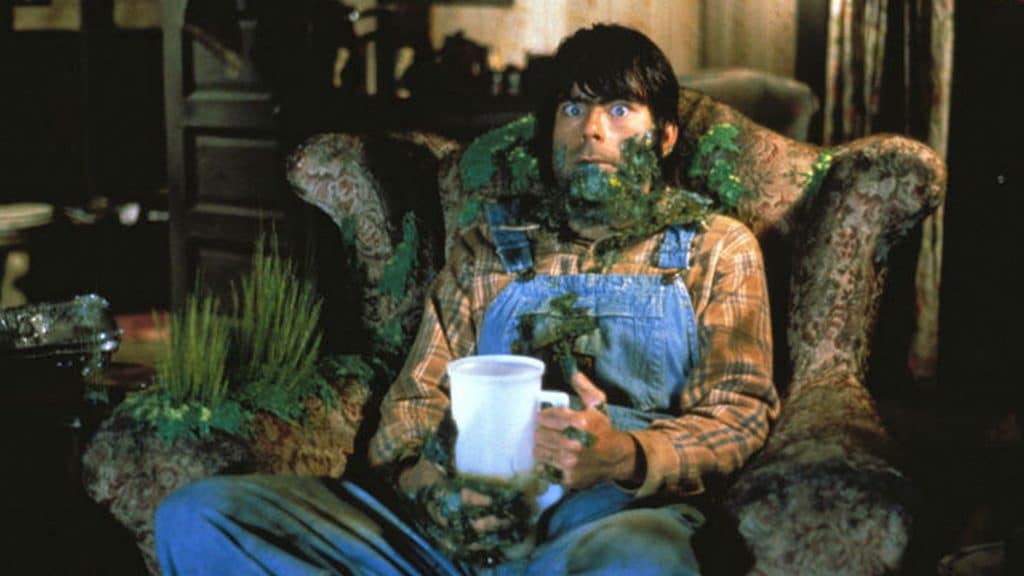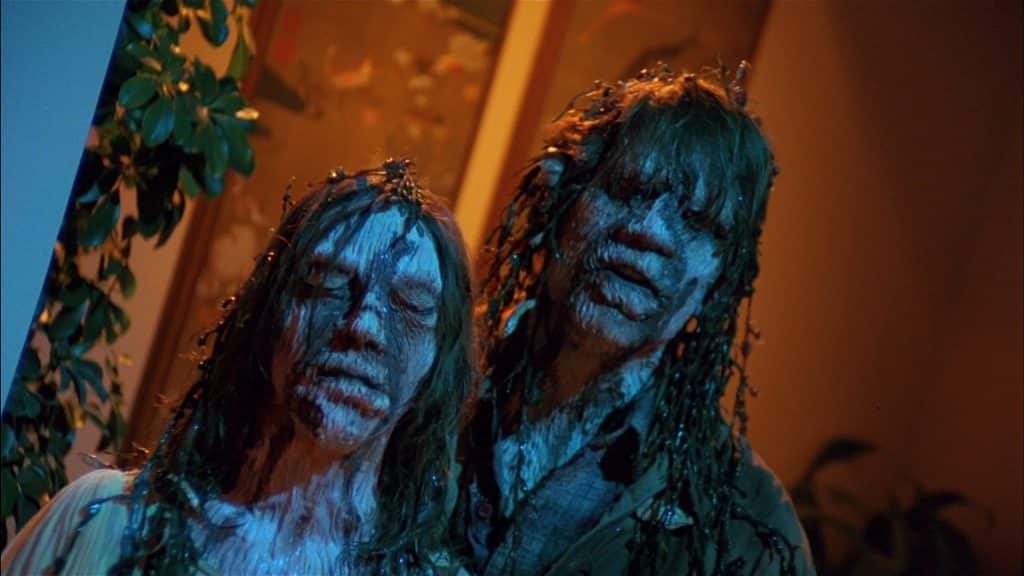Read also:
How to Watch FX Live Without CableHow To Watch AMC Without CableHow to Watch ABC Without CableHow to Watch Paramount Network Without CableEvery month, we at The Spool select a filmmaker to explore in greater depth — their themes, their deeper concerns, how their works chart the history of cinema and the filmmaker’s own biography. This month, we ring in the release of It: Chapter Two by exploring the various adaptations of the master of horror, Stephen King. Read the rest of our coverage here.
For many an impressionable youngster, the horror genre grips you in its vices at an early age. Sadly, not every parent can accept the fact that they are raising a spooky kid. They frown upon horror and forbid their offspring from exposure to anything weird or macabre, lest mainstream society judge them and label them perverts, or worse, godless heathens. Gasp!
This was the case for Stephen King and George A. Romero. Both men grew up massive fans of EC Comics, those 1950s pulpy funnies that served up cartoon fables slathered in gore, despite the fact that they were both forbidden by their respective parents to read them. Which, in hindsight, is probably a good thing, as it led to the creation of a horror classic, 1982’s Creepshow.
King and Romero had been looking for a project to collaborate on since meeting at a screening of Romero’s brilliant lo-fi vampire headfuck Martin back in 1978. Romero was originally attached to direct the television adaptation of King’s novel Salem’s Lot, which was eventually helmed by Tobe Hooper, and at one point was interested in bringing another King novel, The Stand, to the big screen. That was also scrapped, but holy crap, can you imagine?!

So when King pitched a cinematic tribute to the likes of Tales from the Crypt and The Vault of Horror, Romero and his producing partner, Richard P. Rubinstein, immediately signed on. Six weeks later, King delivered his screenplay: five wickedly fun tales of terror, framed by a prologue and epilogue about a little boy named Billy (King’s son, Joe Hill) who is punished by his blowhard father (an uncredited Tom Atkins) for reading horror comics, and the revenge that Billy eventually claims for himself, revenge that the film’s creators couldn’t achieve in real life for a number of reasons, most of which have to do with the effectiveness of gag shop voodoo dolls.
In essence, Creepshow was King and Romero’s way of gleefully getting back at everyone who had ever treated them unfairly or maligned them for being young horror geeks, from their parents on down. When Billy hears a tapping on his bedroom window and sees the ghoulish visage of the Creep, the mascot from the comic that has just been confiscated and thrown away by his abusive old man, he smiles from ear to ear, as if he’s been visited by Santa Claus. In King and Romero’s world, the Creep is an arbiter of justice, a theme that runs throughout the film’s five segments in agreeably twisted and often darkly comedic ways.
Part one, “Father’s Day,” finds Romero firmly in his zombie wheelhouse. It’s the story of a wealthy family of cretinous jerks, the Granthams, gathering to (dis)honor the memory of their miserly old patriarch, Nathan (Jon Lormer), who was murdered on Father’s Day by Bedelia (Viveca Lindfors), his long-suffering spinster daughter. Only this time, it’s not a radioactive satellite that brings the dead back to life, but a spilled bottle of whiskey. And the undead Nathan isn’t so much interested in eating Bedelia’s brains as he is using her head as the centerpiece for the birthday cake he didn’t get to enjoy before shuffling off this mortal coil.

Part two, “The Lonesome Death of Jordy Verrill,” deals with the titular backwoods “lunkhead” (played by King himself like Don Knotts on meth) and his discovery of a meteorite that he hopes will net him a hefty paycheck from the local college’s science department. Instead, poor Jordy ends up getting covered in “meteor shit” which, once exposed to water, grows into dense, itchy tufts of alien grass that suffocate his entire body. Worst of all, as an ominous weather report suggests, heavy rains may soon spread this extraterrestrial vegetation all over creation. Perhaps Jordy Verrill’s fate will be our own?!
Part three, “Something to Tide You Over,” concerns Richard Vickers (Leslie Nielsen), a wealthy psychopath who devises a cruel plan to punish his wife, Becky (Gaylen Ross), and her lover, Harry Wentworth (Ted Danson). After burying the pair up to their necks below the high-tide line, Richard watches with glee on a closed-circuit TV from the comfort of his palatial beach house as they both appear to drown. But wait, what happened to their bodies? Whoops, turns out they return as water-logged zombies (again with the zombies!), and bury Richard next to the rising tide. But that’s ok: as Richard memorably exclaims, “I can hold my breath…for a looooooooong time!”
Part four, “The Crate,” is Creepshow’s piece de resistance. Henry Northrup (Hal Holbrook) is a mild-mannered college professor who is constantly being humiliated and henpecked in front of his peers by his boorish, drunken, loudmouth wife, Billie (Adrienne Barbeau). Meanwhile, a crate labeled “Arctic Expedition – June 19, 1834” is found beneath the staircase at the local college where Henry teaches. If you guessed that this crate contains a bloodthirsty yeti-ape, then either you’ve seen this movie before or you’re very good at guessing. Will Henry feed Billie to this terrifying creature? Well, one thing’s for sure: the janitor and the grad student certainly didn’t seem to make a dent in its appetite.

Part Five, “They’re Creeping Up on You,” closes Creepshow out with the tale of Upson Pratt (E.G. Marshall), a business tycoon who is as cruel as he is ruthless. Suffering from mysophobia, he lives in a stark white, hermetically sealed New York City penthouse apartment, and wiles away the hours berating his enemies over the phone, and spewing racial epithets at his put-upon assistant, Mr. White (David Early). However, Pratt gets his comeuppance when a rolling blackout hits the city, and his germ-free domicile is overrun by cockroaches. Lots and lots of cockroaches. Are they all in his mind? Literally, yes, as the segment ends with Pratt being eaten away from the inside by the creepy crawlers. It is very gross and very awesome.
On paper, none of this should’ve worked. Horror anthologies are a notoriously mixed bag, uneven by their very nature. Romero’s filmography, at least those films that didn’t include the word “Dead” in their title, had largely been ignored by the moviegoing public up to that point. King had never written anything like this before, and as the ensuing years would show, his involvement would often prove to be more of a liability than an asset. Just ask anyone who has suffered through his TV miniseries reboots of The Shining or Children of the Corn: King is almost clinically incapable of looking at his work objectively, which makes for bloated, nearly unwatchable adaptations. And when the material is entirely an original creation, we get Maximum Overdrive, a film on which King could’ve feasibly shared credit with a giant bag of cocaine.
Luckily, for this brief moment in time, the stars aligned, and we got not just a high water mark in horror anthologies, but in horror movies in general. It is no big secret that King intrinsically understands childhood: how big the stakes feel in everyday life, how cruel and unfair the adults around you can be, how important it is to have a fantasy world to escape to. Creepshow is shot through with these qualities to a degree that should make it feel silly but is instead exhilarating. The term “kids of all ages” is a hoary cliche, but no matter how old you are, this film will give you the spine chill of childhood Halloweens long since past.
No matter how old you are, this film will give you the spine chill of childhood Halloweens long since past.
Even better, King’s obvious love for this material brings out the best in Romero. The director’s trademark social commentary is still there if you’re looking for it (especially in the final story), but ultimately Romero turns King’s screenplay into a 1950’s b-movie extravaganza. The cast play the material totally straight in a way that the Zucker brothers would undoubtedly approve of, there are Dutch angles aplenty, and of course who can forget those close-ups, all slathered in queasy washes of red and blue light, giallo by way of Jack Kirby. Special commendation is reserved for practical effects genius Tom Savini, who lends a tactile grossness to everything from the drunken corpse to the fuzzy beast, and cartoonist Bernie Wrightson, who created the animated interstitials that wrap all the stories together in one big splashy strip, a love letter to horror comics.
This is a big part of why Creepshow continues to endure 37 years later: it treats its source material not as the disposable trash that so much of the world would dismiss it as outright, but rather with affection and reverence, effectively conveying what so many spooky kids already know: being scared can be a hell of a lot of fun.